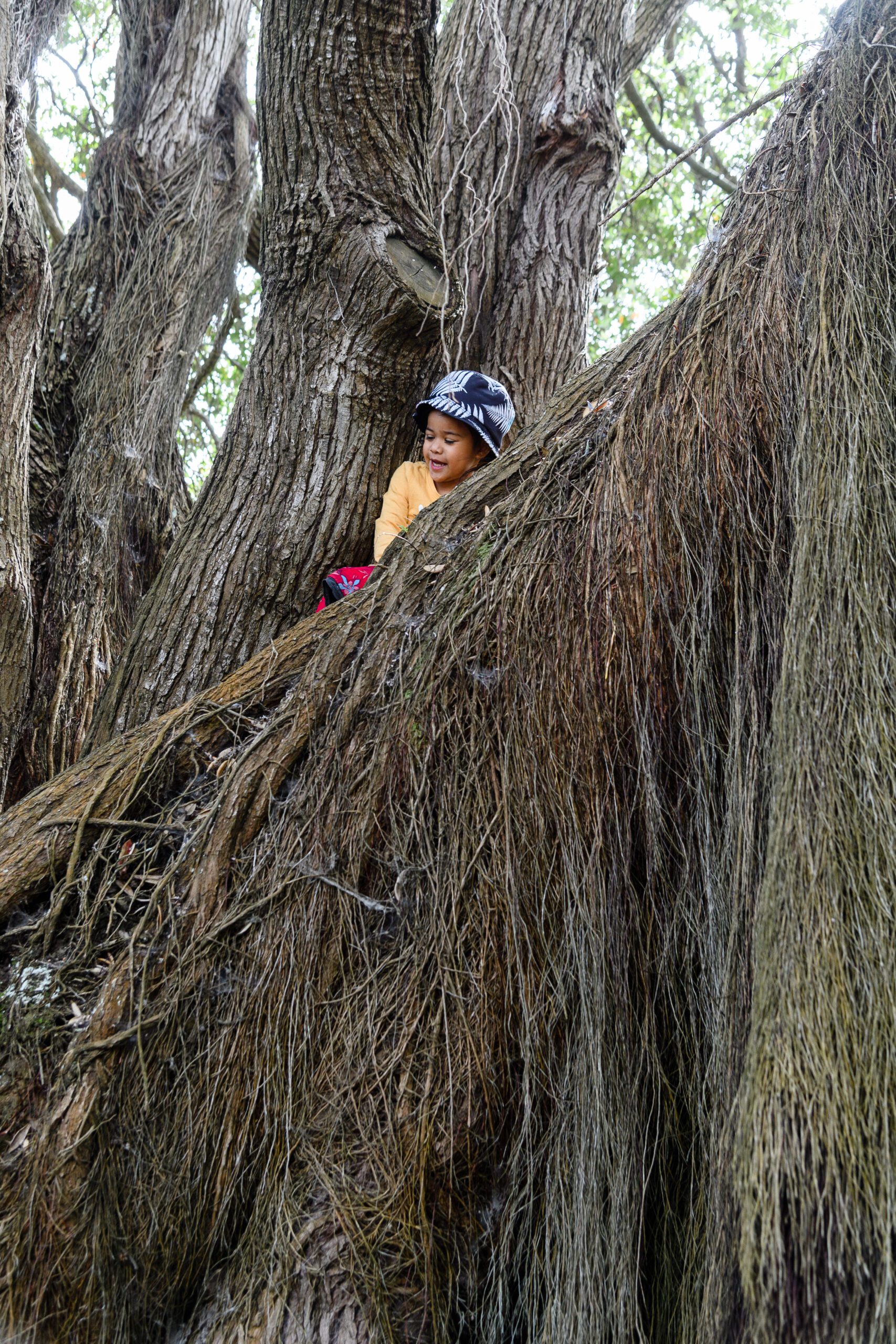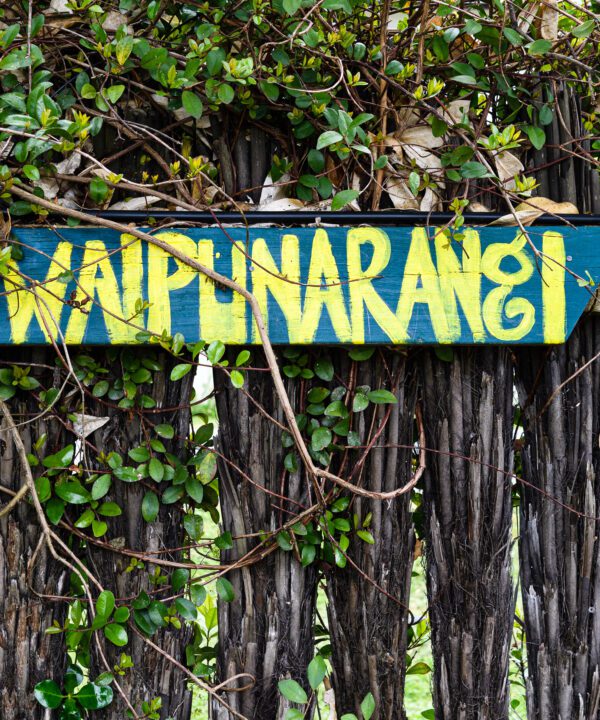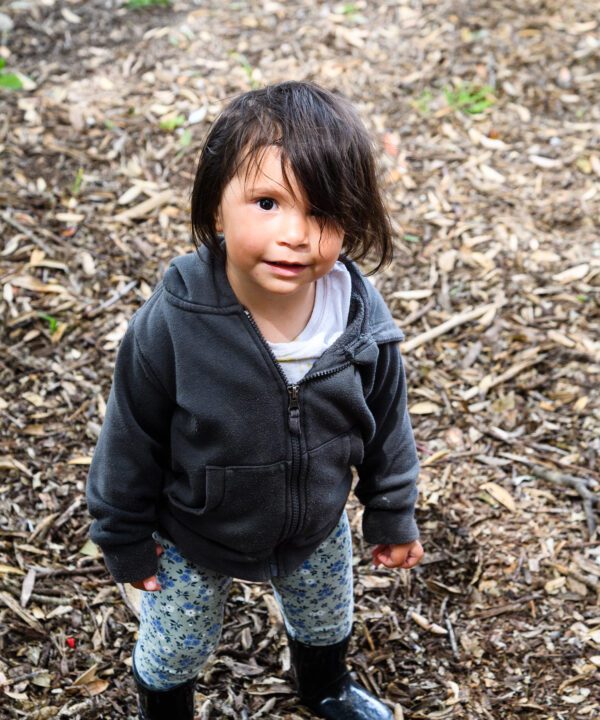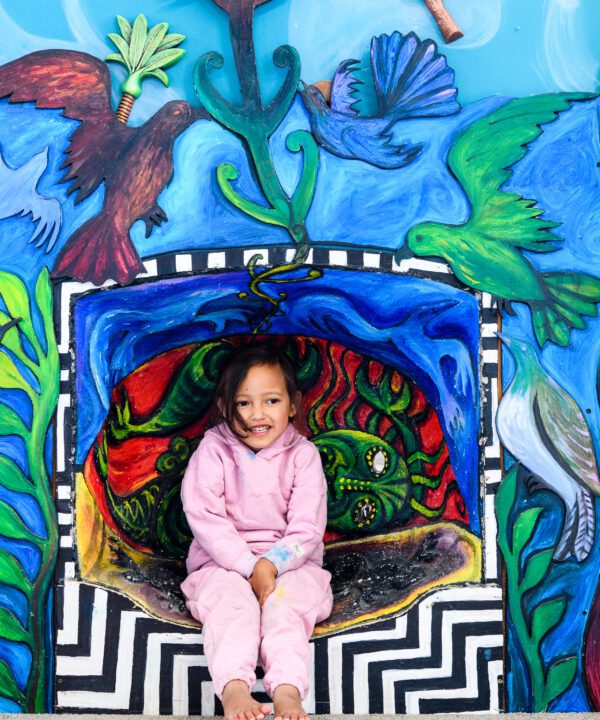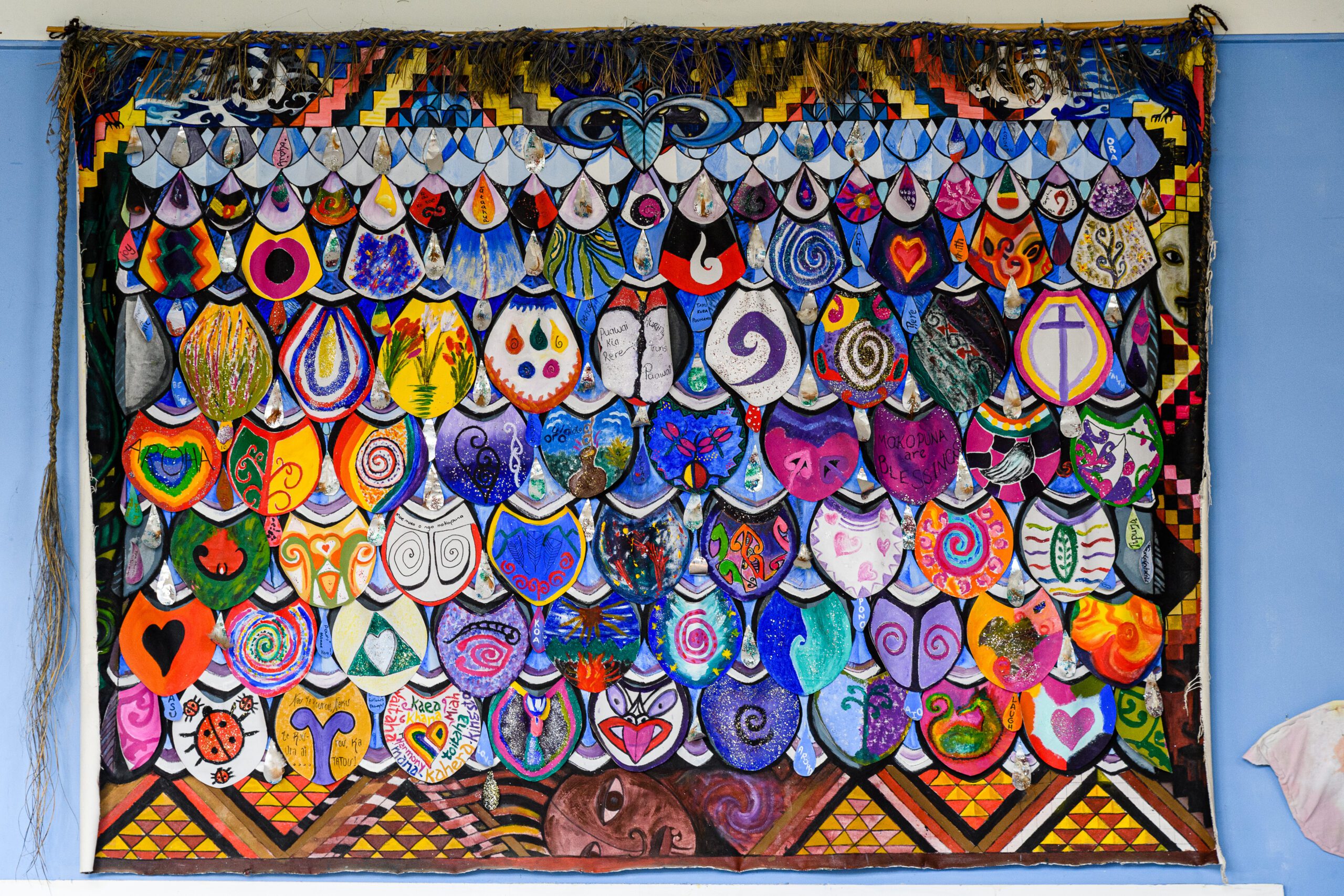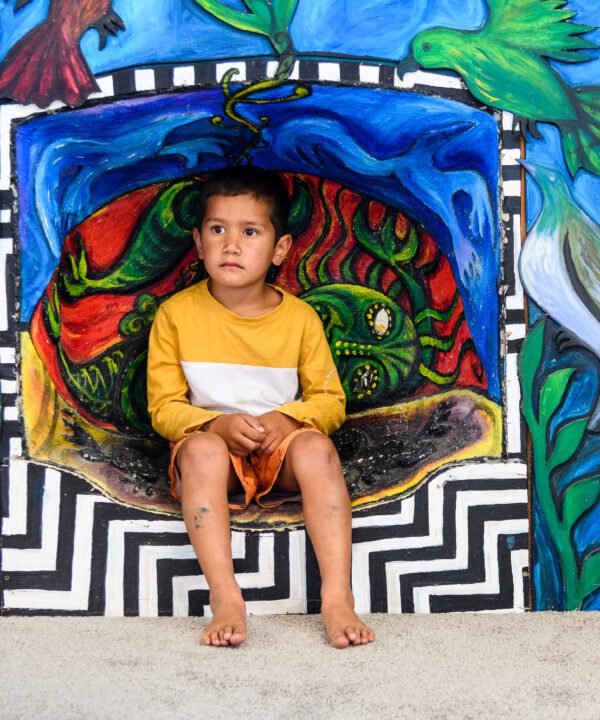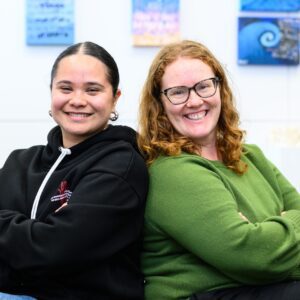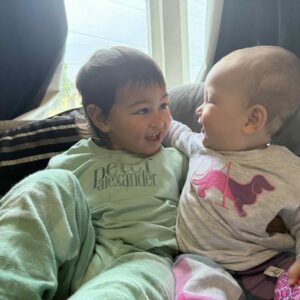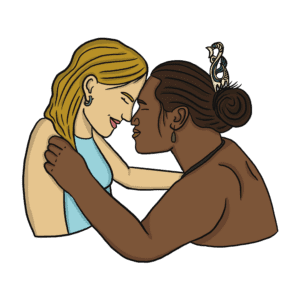Brittany Manawaiti of Ngāti Maniapoto has been on a journey of reconnecting with her Māori whakapapa. While teaching, she discovered that the use of te reo Māori and knowledge of whakapapa was very beneficial for her tamariki and Māori whānau outcomes. Brittany received a bilingual scholarship through TeachNZ to study full immersion for one year at Te Wānanga o Raukawa. She says that this was life changing for her as she couldn’t have afforded it otherwise.
Brittany’s dad is from Ngāti Maniapoto and grew up in Te Kūiti, while her mother is Pākehā. Growing up, Brittany says that she didn’t really have much of a connection to her Māori whānau and didn’t have much exposure to te reo Māori. However, through her reo journey she discovered connections that she never knew existed.
She says that she had the “most amazing learning journey” at Te Wānanga o Raukawa and while studying she came across people from all walks of life including teachers, principals, film directors and lawyers. Everyone that was on the course together was so supportive of each other because they were all on the same level. “It didn’t matter who you were, everyone was learning together. It truly was a collective effort and if someone fell, you would work as a rōpū to bring that person along with you.”
Brittany shared that she had periods that were very up and down, in which she would question herself and ask, “What am I doing here?” One day she joked with the pūkenga reo (lecturer) that she needed to go to kōhanga and learn with the tamariki there. Months later, that same pūkenga reo came up to her and told her to attend the whānau hui of a local kōhanga reo that was happening that same night. She remembers being in a circle with the whānau and explaining who she was and why she was there. She told them that it would be beneficial for her reo journey to learn with the tamariki. They took her in and she became part of the whānau. The kōhanga eventually became a safe space for her and, if she needed anything, they would help her – particularly with her studies.
She worked at Te Kōhanga Reo o Tū Roa in Ōtaki every Friday, and sometimes also on the days she wasn’t busy with course mahi. In return for the knowledge that they were sharing with her, she was able to offer her own knowledge, helping with finances and fundraising for the kōhanga where she could.
For Brittany, learning te reo Māori unearthed some emotional trauma, and at times she would feel whakamā for her lack of knowledge of her language and background. She found that the iwi and hapū papers in particular were quite hard because she was further away from the marae and wasn’t able to connect as easily as others. Having support from her kōhanga whānau and fellow course mates was critical in getting her through this period.
Unfortunately, Brittany didn’t return for her second year of studies. She explains that funding it herself was too risky and transitioning back into her workplace was another obstacle. Having left her studies and the kōhanga behind, she was hit by a grief that she wasn’t expecting.
In preparing for her transition back to ECE, she asked herself what her reo journey would look like moving forward and how she would maintain it. But as fate would have it, not long after Brittany had returned to her teaching position at Raumati South Kindergarten, she found out that she was pregnant and will be welcoming twins in May of 2023. She sees this blessing as a sign to continue her reo journey.
“It is a big effort for adults to learn a new language, especially if they are full-time teachers.”
Brittany plans to send her tamariki to Te Kōhanga Reo o Tū Roa where her reo journey began and where she hopes her tamariki will begin theirs. She wants her tamariki to be part of the next generation of fluent te reo Māori speakers who will continue to be champions for our reo, ensuring the future of te reo Māori in Aotearoa.
Brittany is currently doing Te Ahu o te Reo Māori and says it is a game changer[1].
“It is a big effort for adults to learn a new language, especially if they are full-time teachers. Another year of effort on top of the already busy workload and then figuring out how to implement those new learnings into your teaching is a lot. Plus, you don’t get paid for this extra time that you are putting in. You really are investing your time in order to get better outcomes for your tamariki and whānau.”
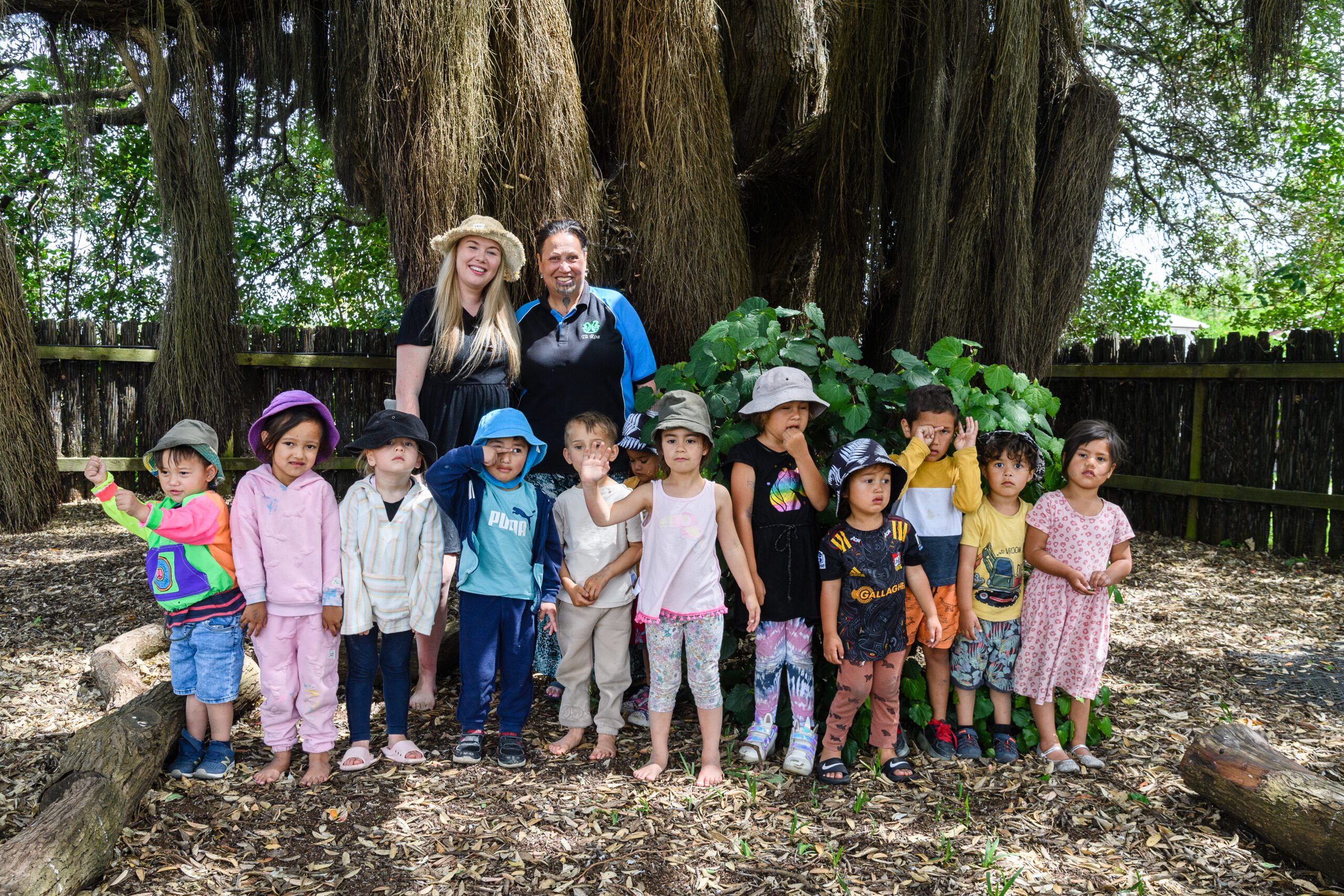
***
Anneke Brouwers, a teacher at Newton Central School in Auckland, had always wanted to learn te reo Māori, but only began learning it when she started university. At first, she completed a few te reo Māori papers, which gave her a solid foundation to start learning in full immersion. Anneke says it’s useful to have some level of te reo Māori proficiency before going into full immersion, but it is not crucial: “From my experience, the more you have, the more you get out of it.”

With the support of her partner, her whānau and her kaiako, in 2019 – after just one year of learning in full immersion at Te Wānanga o Raukawa – Anneke began teaching in the full immersion unit at Newton Central School, Te Uru Karaka.
For Anneke, although she only embarked on her full immersion year at Raukawa a few years ago, her love for te reo Māori had always been there. She recalls going to a marae for the first time when she was only eight years old: “My mother was graduating with her Bachelor of Nursing at the same time that an uncle of mine was graduating with his PhD that he had written on the revitalisation of te reo Māori. The night before the graduation ceremony, we went along to the Massey University campus marae. We sat along the pakitara of the wharenui and watched as person after person would stand and mihi to my uncle for his achievement. After each person spoke, we would get up to sing a waiata, which was such an amazing experience for me because I loved music and singing. Although we were a Pākehā whānau, we really felt the manaakitanga in the wharenui that night and from that point on I felt a deep connection to te ao Māori and waiata in particular.”
***
There is something to be said about the power of waiata when it comes to learning te reo Māori. Jenna-Lee Pfeifer, who teaches the under-twos at the Otago University Childcare Association’s (OUCA) Te Pā, says, “Waiata has been a powerful tool in my language journey, especially around pronunciation.” Jenna-Lee has always loved music, so at times when she struggles with the pronunciation of a word she finds it helpful to learn a waiata with that same word in it. The repetitive and fluid nature of waiata just helps it stick in a way that simply speaking the word cannot.

Jenna-Lee is Canadian and has lived in Aotearoa New Zealand for five years with her husband, who is from England, and their daughter. She said that when she first came to the country nine years ago to visit her husband’s parents, she just fell in love with the place. “It felt like coming home.”
When she and her husband made the decision to move to Aotearoa, she knew she would need to learn te reo Māori and become fluent. She was aware that for some of the tamariki that she would be teaching, te reo Māori would be their first language. She says that when she uses te reo Māori with these tamariki in her class, “You can see it on their faces, like ‘I know that’ and ‘you know me.’ It’s amazing what you feel when someone greets you in your home language. You just feel seen.” Seeing the reactions of parents and whānau to her use of te reo Māori with their tamariki and in the narratives that she writes for them gives her great confidence that she is on the right path. “It keeps me going.”
Jenna-Lee is doing Te Ahu o te Reo ki Ngāi Tahu, which is Te Ahu o te Reo Māori taught using Ngāi Tahu dialect. “To be able to learn Ngāi Tahi dialect, to learn the language of where I’m standing, has been such an opportunity,” she says, also stating that she loves the way this is being taught and how it’s being provided to kaiako in
the region.
She attends classes between 4–7pm every Thursday, and Ministry of Education funding pays for her to be released early from her mahi. She doesn’t think that her journey would have progressed as rapidly as it has without this course.
“It’s amazing what you feel when someone greets you in your home language. You just feel seen.”
Her reo journey has encouraged her to submit a proposal to the university to do her PhD on the decolonisation of early learning in Aotearoa. A personal goal for her as part of this is to be conversationally fluent in te reo by the end of the four years.
On top of learning te reo Māori, Jenna-Lee is also learning NZSL, motivated by her daughter, who lost most of her hearing earlier this year and now wears a hearing aid. Her daughter also has a genetic condition that typically leads to complete deafness in teenage-hood. Jenna-Lee admits that it has been “harder and more isolating” learning NZSL than it has been to learn te reo Māori because those same supports aren’t available for NZSL, especially in Dunedin. She says, “NZSL is not elevated in professional practice. It has been hard trying to navigate this space, but it has opened my eyes to the fact we need to be looking at all of the official languages.” The fact that it has been hard for her to access these courses where she lives only reinforces the need to learn.
Jenna-Lee says that she has recently connected with a community of NZSL users in Dunedin and hopes that she can attend regular hui with them to continue to progress her NZSL. She says that it will be great for her daughter to see other people that also use NZSL and have similar experiences to her.
***
Maryanne Grocott, a kindergarten relief teacher in Upper Hutt, has been learning NZSL for the past eight years. Maryanne wears hearing aids and says that she had an interest in learning both official languages and even started to learn te reo Māori, but says that she found it difficult to focus due to the busy environment.

“I saw that there was a free six-week class at the library to learn NZSL. I did that and got a taste of it and found that it was something that I could pick up and enjoy and teach to the tamariki that I work with.” Maryanne loves teaching the tamariki in her classes different signs for food and colours. She says that other teachers that she works with can also sign and they often have conversations using NZSL in front of the tamariki, some of them asking, “What did you just say to each other?” She says, “It’s great when you get into an environment where you can use it and people are using it as a living language and children become curious and start to ask questions.
“Often you can be signing to a child and you can see their hands moving and they will be mimicking signs that you are doing. They are in that stage of learning where everything is like a sponge. I like to do simple things like play games with them. I might speak in English but do the sign for a colour and ask to go find things that are red. After a while they get used to the sign and then you don’t have to use the word.”
“It’s great when you get into an environment where you can use it and people are using it as a living language and children become curious and start to ask questions.”
Maryanne explains that her learning journey has been in bits and starts, and that for the first two years of the COVID-19 pandemic she wasn’t able to learn any sign. There were online classes available, but she found these too difficult to follow. Now she makes sure that if there are meetings or classes in person, she knows about them and will tap into them. She has even been attending regular café meet-ups with other NZSL users, which she says has really helped with her proficiency and use of the language.
One of the limitations associated with learning NZSL is the few courses that are available outside of university education. Maryanne is currently doing a repeat course in order to keep her NZSL knowledge fresh. All of these courses are paid for out of her own pocket as funding for NZSL courses is few and far between. However, in the last year there have been subsidies for classes, with some being free. “Occasionally, they have some funding and the classes are subsidised – sometimes lightly and sometimes heavily – but mostly I pay for the classes and go in my own personal time.” Maryanne says that being self-motivated is crucial to succeeding with learning any language as an adult.
Since starting her NZSL journey, Maryanne has become a great advocate for the language, offering Let’s Talk booklets by Deaf Aotearoa to help those who are interested in learning get started. She says that if anyone is interested in NZSL to just get immersed in it. “Look online for classes and then find a group in your community that you can practise with. It doesn’t matter your level, there will be someone there that can sign with you. Yes, you will make mistakes and have to laugh at yourself, and others will also laugh with you, but it’s okay as it’s all part of the learning process.
“It’s exciting to see NZSL coming into the forefront. I think that the 1pm news updates we had during COVID were great for bringing it into the public arena. It’s important for people to see it because it gets them talking, it starts the conversations. I think the more people who learn it the more it will be used and the more support the Deaf community will have.”
***
Te reo Māori and NZSL are both official languages of Aotearoa New Zealand and are unique to this country. It is our responsibility to protect these taonga to ensure they are here for future generations. Everything we do today influences what happens tomorrow. There are pathways that exist and if you have the motivation to learn, it is possible. So, if you can, get out there and do it! Mahia te mahi!
[1] Te Ahu o te Reo Māori, which means “the future pathway of te reo Māori” is a Ministry of Education funded programme for those working in the education sector that aims to grow and strengthen an education workforce that can integrate te reo Māori into the learning of all ākonga in Aotearoa.
